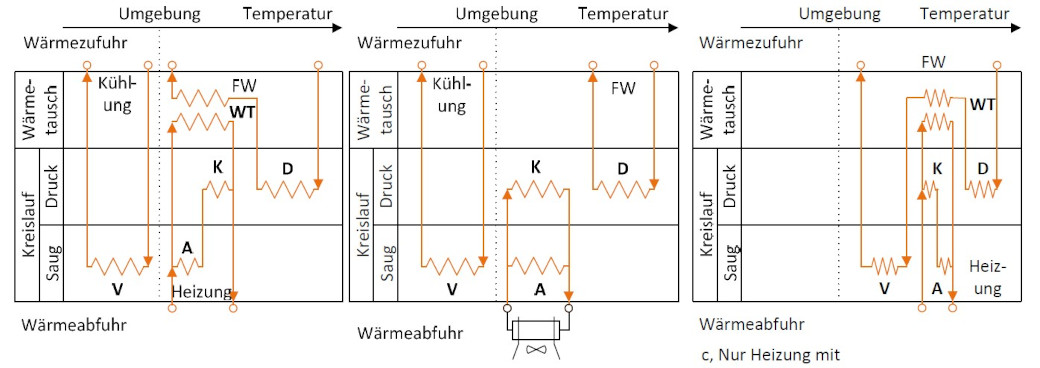ExTra - ExergyTrafos for heating and air conditioning through district heating
Short Description
The aim of the project was to develop concepts, technologies and solutions for future cities and urban neighbourhoods and to support their implementation in order to promote an energy-efficient and climate-friendly city and increase the quality of life and economic attractiveness of the location.
The energy transition in Austria requires innovative approaches to reducing fossil fuels, which continue to play a significant role in heat supply. Around 33% of the energy used in Austria is used to provide space heating, which accounts for around 20% of the country's CO2 emissions. The project aimed to increase the efficiency of district heating and cooling systems and reduce the environmental impact by integrating new technologies such as absorber and ejector circuits. District heating and cooling systems in Austria are still heavily based on fossil fuels. The development and optimization of technologies to increase energy efficiency and reduce CO2 emissions are therefore of great importance. The "Extra - ExergieTrafos for heating and cooling through district heating" project was funded as part of the "City of the Future" program to tackle these challenges.
The project investigated various technologies for the combined provision of heating and cooling, in particular absorber and ejector circuits. The aim was to optimize the efficiency of these systems and minimize their environmental impact. In most scenarios, the absorber circuits showed the highest exergetic efficiency and the lowest environmental impact, especially in the combined provision of heating and cooling. The methodological approach included a comprehensive thermodynamic modelling of the cycle components, an exergetic and economic evaluation and a multi-criteria optimization. The systems were evaluated in terms of their environmental impact using Life Cycle Assessment (LCA), with the focus on the operation of the systems. The results showed that the absorber systems represent the most ecologically favorable option in most scenarios. They achieved an exergetic efficiency of up to 91% in the combined provision of heating and cooling and had the lowest CO2 emissions. Although the ejector systems had potential, they had a higher environmental impact due to their higher district heating input and electricity consumption. The reference system, which is based on conventional compression chiller technology and a heat exchanger in the district heating network, performed worse due to its high electricity consumption. The results also highlight the need to decarbonize energy sources, in particular district heating and the electricity mix. Increased efficiency in absorber and ejector technologies could further improve their environmental balance. The choice of system should always be adapted to regional conditions such as the electricity mix and the availability of district heating in order to minimize the environmental impact. A more comprehensive life cycle analysis, which takes into account not only the operation but also the production and disposal of the systems, could enable a more differentiated assessment of sustainability.
The absorber systems therefore offer the greatest potential for a sustainable energy supply in this project due to their high efficiency and low environmental impact. They represent a forward-looking solution, particularly in urban applications with combined heating and cooling requirements. The combination of efficient coupling technologies with a decarbonized energy mix is the key to a sustainable energy supply.
Project Partners
Project management
University of Applied Sciences Burgenland GmbH
Project or cooperation partners
- Technical office for mechanical engineering and energy technology Dr. Georg Beckmann
- Wien Energie GmbH
Contact Address
Prof. (FH) DI Ernst Blümel
Steinamangerstraße 21
A-7423 Pinkafeld
Tel.: +43 5 7705-4130
E-mail: ernst.bluemel@fh-burgenland.at
Web: www.fh-burgenland.at


